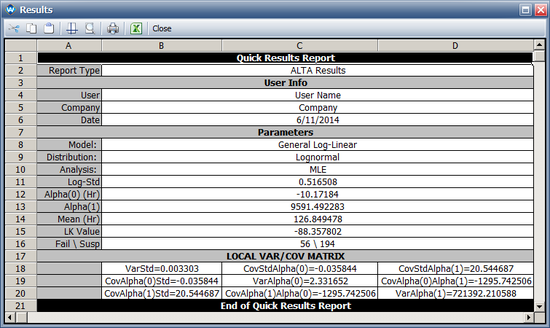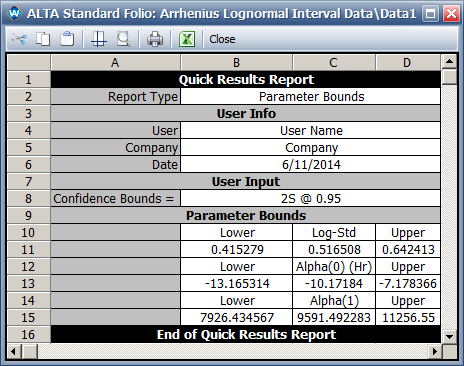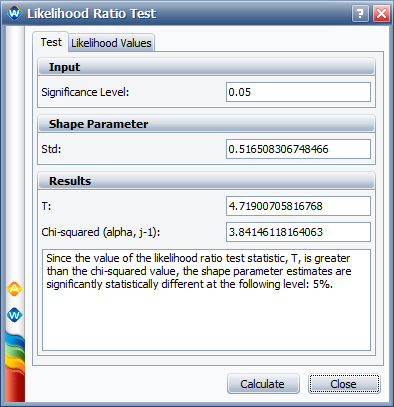Arrhenius-Lognormal Model for Interval Data: Difference between revisions
Jump to navigation
Jump to search
Kate Racaza (talk | contribs) No edit summary |
Kate Racaza (talk | contribs) No edit summary |
||
| Line 71: | Line 71: | ||
{{Reference_Example_Heading4|ALTA}} | {{Reference_Example_Heading4|ALTA}} | ||
* The following picture shows the ML estimations for the model parameters in ALTA and the log-likelihood value (LK Value). | |||
[[Image: Arrhenius Log results.png|center|550px]] | |||
The picture above also shows the standard deviations of the parameters. These are: <math>std(\sigma)\,\!</math> = 0.06, <math>std(\beta_{0})\,\!</math> = 1.5, <math>std(\beta_{1})\,\!</math> = 0.07. Therefore, their variances are: <math>Var(\sigma)\,\!</math> = 0.0036, <math>Var(\beta_{0})\,\!</math> = 2.25, <math>Var(\beta_{1})\,\!</math> = 0.0049. In terms of <math>\alpha_{1}\,\!</math> , the variance is <math>Var(\alpha_{1})\,\!</math> = 11605<sup>2</sup> and <math>Var(\beta_{1})\,\!</math> = 659912.5. | |||
The difference of the variance in ALTA and the results in the book are caused by the precision in the book since results are provided only up to the 2nd decimal. | |||
* The 95% two-sided confidence bounds on the parameters are shown next: | |||
[[Image: Arrhenius Log parameter bounds.png|center]] | |||
* The likelihood ratio common shape parameter test statistic is 4.7, as shown next. | |||
[[Image: Arrhenius Log LK test.png|center]] | |||
As the results show, the values obtained by ALTA are very close to the results given in the book. | |||
Revision as of 20:08, 11 June 2014
ALTA_Reference_Examples_Banner.png


